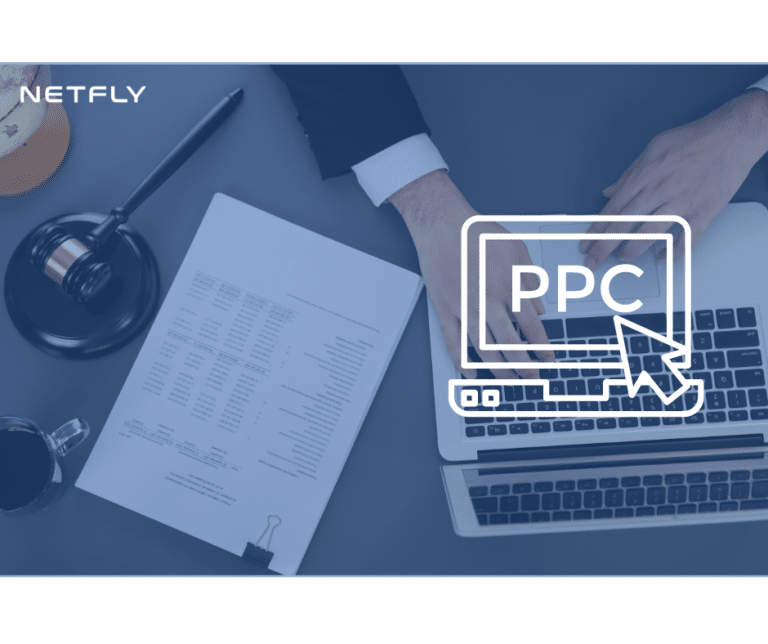In today’s competitive legal landscape, honing in on high-value client segments can be the key to securing sustainable growth for your firm. By adopting a strategic approach to client identification and prioritization, you can greatly enhance your firm’s profitability and reputation. But how exactly can you pinpoint these lucrative segments amidst a sea of potential clients? Explore the nuanced strategies and tools that successful law firms employ to attract and retain the most profitable clients, setting themselves apart in an increasingly crowded market.
Key Takeaways
- Conduct client profitability analysis to pinpoint high-value segments.
- Tailor marketing strategies for personalized client communication.
- Utilize data analytics to identify trends in high-value client segments.
- Implement retention strategies focusing on loyalty and referrals.
- Measure ROI by tracking key performance indicators for profitability.
Understanding Client Segmentation
When delving into the domain of successful law firm marketing strategies, understanding client segmentation is an essential component that can greatly enhance your firm’s growth potential. Client profiling involves categorizing your clients based on various factors such as demographics, behavior, and legal needs. By conducting thorough client profiling, you can identify patterns and preferences that allow for more personalized and targeted marketing efforts. This targeted approach enables you to tailor your services and messages to different client segments effectively.
Profitable targeting is the next step after client profiling. Once you have segmented your clients, it’s vital to prioritize those segments that are most lucrative for your firm. By focusing your marketing efforts on high-value client segments, you can maximize your return on investment and attract clients who aren’t only profitable but also likely to become long-term partners. This strategic approach to client targeting ensures that your resources are allocated efficiently and that you’re attracting clients who align with your firm’s expertise and values.
Importance of Targeting Profitable Clients
To maximize your law firm’s growth potential and guarantee efficient resource allocation, targeting profitable clients is a strategic imperative that directly impacts your firm’s long-term success. Client profitability isn’t just about the revenue generated; it involves understanding which clients yield the most value to your firm. By focusing on profitable clients, you secure that your resources are allocated where they can provide the highest return on investment.
Targeted marketing plays a pivotal role in attracting profitable clients to your firm. It involves tailoring your marketing strategies to reach specific client segments that aren’t only likely to bring in revenue but also align with your firm’s expertise and values. By concentrating your efforts on these high-value clients, you can enhance client satisfaction, increase client retention rates, and drive overall profitability.
Identifying and pursuing profitable clients through targeted marketing can lead to a more sustainable and successful law firm. By honing in on client segments that offer the most significant long-term value, you position your firm for growth and profitability. This strategic approach ensures that your firm remains competitive in the legal market while fostering strong and mutually beneficial client relationships. Ultimately, targeting profitable clients is a cornerstone of a successful law firm’s business strategy.
Analyzing Client Lifetime Value
Understanding the intrinsic value each client brings to your law firm is foundational to strategic growth and sustainability. Conducting a thorough lifetime value analysis allows you to gauge client profitability accurately. By delving into client lifetime value, you can identify the clients who contribute the most to your firm’s bottom line over the entirety of your relationship with them. This analysis goes beyond just the revenue they generate at the outset and considers factors like repeat business, referrals, and additional services they may require in the future.
Client profitability isn’t solely determined by the initial transaction amount but extends to the potential value a client can bring over time. By segmenting your client base based on their lifetime value, you can allocate resources more efficiently. High-value clients deserve personalized attention and tailored services to nurture the relationship and maximize their potential. On the other hand, clients with lower lifetime value may require a different approach to increase their profitability or determine if they’re a good fit for your firm in the long term.
Analyzing client lifetime value empowers you to make informed decisions about resource allocation, marketing strategies, and client retention efforts. It allows you to prioritize high-value clients, enhance their experience, and ultimately drive sustainable growth for your law firm.
Identifying High-Value Client Criteria
Identifying key indicators that signify high-value clients can greatly enhance your firm’s strategic approach to client acquisition and retention. Conducting thorough client profitability analysis and target market identification allows you to pinpoint the most lucrative segments for your law firm. By evaluating revenue potential and appraising client value, you can identify clients who not only bring in significant revenue but also have the potential for long-term, mutually beneficial relationships.
Client profitability analysis involves looking beyond initial revenue generation to contemplate factors like repeat business, referrals, and potential for upselling additional services. This analysis helps you focus on clients who contribute the most to your firm’s bottom line over time. Simultaneously, target market identification ensures that you’re directing your efforts towards clients who align with your firm’s strengths and values, maximizing the chances of successful and profitable engagements.
Furthermore, evaluating the revenue potential of each client and appraising their overall value to your firm allows you to prioritize high-value clients in your client acquisition strategy. By understanding the characteristics and behaviors of these clients, you can tailor your marketing efforts and service offerings to attract and retain similar high-value clients in the future. Identifying and nurturing relationships with high-value clients is key to sustainable growth and profitability for your law firm.
Leveraging Data for Client Segmentation
Leveraging data analytics enables your law firm to strategically segment clients based on valuable insights and actionable patterns. By utilizing predictive analytics, you can harness the power of data to identify trends, preferences, and behaviors that define high-value client segments. Data-driven marketing allows you to move beyond traditional demographic categorizations and explore the specific needs and expectations of your most profitable clients.
Through data segmentation, you can tailor your services to meet the unique requirements of different client segments, maximizing client satisfaction and retention. By analyzing client data, you can anticipate their future needs, personalize your interactions, and offer targeted solutions that resonate with each segment. This personalized approach not only enhances client loyalty but also increases the likelihood of referrals and positive reviews.
Furthermore, data-driven client segmentation enables you to allocate resources more efficiently by focusing on high-value clients who generate the most revenue for your firm. By understanding the characteristics that distinguish these clients, you can fine-tune your marketing strategies to attract similar prospects and optimize your return on investment.
Tailoring Marketing Strategies for High-Value Clients
Harnessing the insights gained from data segmentation, your law firm can craft tailored marketing strategies to effectively engage high-value clients and drive sustainable growth. By analyzing the profitable demographics identified through data segmentation, you can create customized messaging that resonates with these valuable client segments.
To tailor your marketing strategies for high-value clients, start by understanding their unique needs, preferences, and pain points. Use the information gathered from data segmentation to create targeted campaigns that speak directly to these specific client segments. By personalizing your approach, you can establish a deeper connection with high-value clients and position your firm as the ideal solution to their legal challenges.
Customized messaging plays an important role in capturing the attention of high-value clients. Craft compelling content that addresses their concerns, showcases your expertise, and highlights the benefits of choosing your firm. By delivering relevant and personalized communication, you can differentiate your firm from competitors and demonstrate your commitment to meeting the needs of high-value clients.
Incorporating the insights gained from data segmentation into your marketing strategies allows you to focus your efforts on attracting and retaining the most profitable client segments. By tailoring your approach to meet the specific needs of high-value clients, you can enhance client satisfaction, drive revenue growth, and position your firm for long-term success.
Personalizing Client Communication
Crafting personalized client communication is essential for establishing meaningful connections and fostering long-term relationships with high-value clients. To excel in this area, consider the following client customization techniques:
- Segmentation Strategy: Implement a robust segmentation strategy to divide clients into specific groups based on their needs, preferences, and behaviors. This allows for more targeted and personalized communication.
- Tailored Content Creation: Develop tailored content that resonates with each client segment. This could involve customizing newsletters, legal updates, or event invitations to address the unique concerns of different client groups.
- Personalized Interactions: Embrace individualized client outreach by incorporating personal details into your communications. Address clients by name, reference past interactions, and tailor your messages to their specific situations.
- Feedback Mechanisms: Create feedback mechanisms to gather insights from clients about their communication preferences. This can help you refine your personalized communication approaches over time to enhance client engagement.
Implementing Client Retention Strategies
To enhance client retention, you need to focus on implementing effective strategies such as client loyalty programs and personalized communication approaches.
These initiatives can strengthen the bond between your firm and its clients, fostering long-term relationships and repeat business.
Client Loyalty Programs
Enhancing client loyalty through well-designed programs is a key aspect of implementing effective client retention strategies for law firms. To guarantee your client loyalty programs are impactful, consider the following:
- Tailored Reward Programs: Create personalized rewards based on client preferences to increase client satisfaction and incentivize continued engagement.
- Consistent Communication: Maintain regular contact with clients to show appreciation and keep them engaged with your firm.
- Exclusive Loyalty Incentives: Offer exclusive perks or benefits to loyal clients to strengthen their connection with your firm.
- Feedback Mechanisms: Implement feedback channels to understand client needs better, address concerns promptly, and enhance overall client experience.
Personalized Communication Strategies
When fostering client relationships, personalized communication strategies play an essential role in solidifying loyalty and trust within your law firm’s client base.
By utilizing personalized messaging techniques and client-centric communication strategies, you can create a deeper connection with your clients. Tailoring your communication to address their specific needs and concerns shows that you value their individuality, fostering a stronger sense of partnership.
Implementing personalized communication not only enhances client satisfaction but also increases the likelihood of repeat business and referrals. Understanding your clients on a personal level allows you to anticipate their needs proactively, positioning your law firm as a trusted advisor.
Embracing client-centric communication is key to building lasting relationships and securing a loyal client base.
Maximizing Referrals From High-Value Clients
To maximize referrals from high-value clients, focus on implementing strategic referral strategies that encourage satisfied clients to recommend your firm to others.
Building strong client relationships based on trust and excellent service is key to generating valuable referrals.
Engage with profitable clients actively to guarantee their satisfaction and increase the likelihood of them referring new business your way.
Referral Strategies
Implementing strategic referral techniques can greatly enhance the number of high-value client referrals your law firm receives.
- Leverage Your Referral Network: Cultivate relationships with other professionals like accountants or financial advisors who often interact with your target clients.
- Incentivize Referrals: Offer rewards or incentives for clients who refer new high-value clients to your firm.
- Provide Exceptional Service: Guarantee your current high-value clients receive exceptional service to naturally encourage them to refer others to your firm.
- Targeted Client Acquisition: Focus your client acquisition efforts on segments likely to refer more high-value clients to your firm.
Client Relationship Building
Maximizing the value of client relationships hinges on cultivating trust and delivering exceptional service consistently. Client satisfaction is the cornerstone of successful relationship management. High-value clients are more likely to refer your firm to others if they’re satisfied with the service they receive.
Building strong relationships involves proactive communication, understanding their needs, and exceeding expectations. Regularly seek feedback to confirm their satisfaction and address any concerns promptly. By demonstrating genuine care and attentiveness, you can foster long-term relationships that result in valuable referrals.
Engage with your clients on a personal level, show appreciation for their business, and tailor your services to their specific preferences. Prioritize client satisfaction to leverage their networks for sustainable growth.
Profitable Client Engagement
Nurturing lasting relationships with high-value clients is essential to tapping into a consistent flow of valuable referrals for your law firm. To maximize referrals from these clients, consider the following strategies:
- Client Profitability Analysis: Conduct a detailed analysis to identify your most profitable clients and prioritize efforts towards them.
- Targeted Client Acquisition: Focus on acquiring new clients that align with your high-value client profile to increase the likelihood of receiving quality referrals.
- Personalized Communication: Tailor your communication to each high-value client, showcasing your understanding of their needs and fostering a deeper connection.
- Referral Incentive Programs: Implement programs that incentivize high-value clients to refer others to your firm, creating a mutually beneficial relationship.
Building Strategic Partnerships for Client Acquisition
To enhance your law firm’s client acquisition capabilities, forming strategic partnerships is a pivotal step in fostering growth and expanding your network. Partnering opportunities and strategic collaborations can greatly amplify your reach and attract high-value clients. By strategically aligning with complementary businesses or professionals, you can tap into new client pools and enhance your firm’s reputation.
Identify potential partners whose services or expertise complement your own. Look for firms or professionals in related but non-competing fields. For example, if your firm specializes in intellectual property law, consider partnering with a marketing agency that caters to tech startups. This collaboration can create a symbiotic relationship where both parties benefit from shared clients and referrals.
When approaching potential partners, focus on how the partnership can add value to their clients and yours. Highlight the synergies between your services and how working together can provide holistic solutions to clients’ needs. Building trust and rapport with your partners is essential for a successful collaboration.
Strategic partnerships not only expand your client base but also position your firm as a valuable resource within your network. By leveraging the expertise and networks of your partners, you can attract high-value clients who are seeking thorough legal solutions. Invest time and effort in nurturing these partnerships to cultivate long-term relationships that benefit all parties involved.
Utilizing Technology for Client Segmentation
To effectively attract profitable clients for your law firm, it’s essential to leverage technology for client segmentation.
Tech tools can aid in segmenting your client base, allowing for more personalized and targeted approaches.
Tech Tools for Segmentation
When strategically implementing technology for client segmentation in your law firm, utilizing advanced tech tools can greatly enhance your ability to target and cater to specific client needs effectively. To optimize your segmentation process, consider the following:
- Data Analytics: Utilize data analytics tools to extract valuable insights from client information.
- Segmentation Software: Invest in sophisticated segmentation software to categorize clients based on various criteria.
- Automation: Implement automation tools to streamline the segmentation process and save time.
- Integration: Guarantee seamless integration of tech tools with your existing systems for a cohesive segmentation strategy.
Data-Driven Client Selection
Employing advanced data analytics tools can revolutionize how your law firm strategically selects clients based on specific criteria, maximizing efficiency and effectiveness in client segmentation. By harnessing data-driven insights, you can identify high-value client segments with precision, enabling targeted client acquisition strategies.
These tools allow you to analyze historical data, understand client behaviors, and predict future trends, empowering you to make informed decisions that align with your firm’s goals. Utilizing technology for client segmentation not only streamlines the process but also enhances the quality of your client base.
Embracing data-driven client selection methodologies can have a profound impact on your firm’s success by attracting and retaining the most profitable clients, ultimately driving growth and profitability.
Automated Segmentation Strategies
Implementing automated segmentation strategies through technology can revolutionize how your law firm targets and engages with specific client segments, optimizing your client acquisition process.
- Automated Segmentation Benefits: Streamline the process of categorizing clients based on various criteria such as demographics, behavior, and preferences.
- Efficient Implementation: Save time and resources by automating the segmentation process, allowing your team to focus on high-value tasks.
- Effective Targeting: Tailor your marketing efforts to specific client segments, increasing the likelihood of attracting profitable clients.
- Data-Driven Decision Making: Utilize data analytics to continuously refine and improve your segmentation strategies, ensuring ongoing success in client acquisition.
Measuring ROI on High-Value Client Acquisition
Maximizing the return on investment from acquiring high-value clients requires a thorough understanding of the metrics that drive profitability for your law firm. To effectively measure the ROI on high-value client acquisition, you must conduct a detailed cost benefit analysis. This analysis involves evaluating the costs associated with acquiring and serving high-value clients against the benefits they bring to your firm.
Client acquisition strategies play an important role in determining the ROI of high-value clients. By identifying the most effective client acquisition channels and tactics, you can optimize your resources to attract clients with the highest lifetime value. This targeted approach minimizes acquisition costs while maximizing the potential returns from these clients.
To measure the ROI accurately, track key performance indicators such as client acquisition costs, client lifetime value, and the profitability of high-value clients compared to other segments. By analyzing these metrics, you can identify which client segments bring the most significant returns and adjust your acquisition strategies accordingly.
Implementing a data-driven approach to measuring ROI on high-value client acquisition allows you to make informed decisions that drive profitability and sustainable growth for your law firm. Continuously refining your client acquisition strategies based on these insights ensures that you’re effectively targeting and attracting the most profitable clients.
Continuous Optimization of Client Segments
For effective growth and sustainability, optimizing client segments continuously is crucial for law firms seeking long-term success in a competitive market. To guarantee your firm stays ahead and attracts the most profitable clients, consider the following strategies:
- Continuous Improvement: Embrace a culture of ongoing refinement when it comes to identifying and targeting client segments. Regularly review and update your client segmentation strategies based on market trends and feedback.
- Client Targeting Precision: Refine your client targeting to focus on high-value segments that align with your firm’s strengths and expertise. Tailoring your approach to attract clients who value your services can lead to better client relationships and higher profitability.
- Data-Driven Decision Making: Utilize data analytics to understand client behavior, preferences, and trends. By leveraging data insights, you can make informed decisions about which client segments to prioritize and how to best engage with them.
- Feedback Loop Implementation: Establish a feedback loop with your existing clients to gather insights on their experiences and needs. Incorporating client feedback into your segmentation strategy can help you fine-tune your approach and better meet the expectations of your target segments.
Frequently Asked Questions
How Can Law Firms Effectively Measure the Return on Investment From High-Value Client Acquisition?
When evaluating ROI from high-value clients, measuring effectiveness involves tracking key metrics like client lifetime value, acquisition costs, and conversion rates. By analyzing these data points, you can pinpoint successful strategies and areas needing improvement.
Enhancing your approach through targeted marketing, personalized services, and efficient client management will enhance ROI. Continuously refining your tactics based on these insights guarantees sustainable growth and profitability for your law firm.
What Are the Key Challenges in Continuously Optimizing Client Segments for Law Firms?
You’re constantly battling a tidal wave of ever-changing client needs, making it feel like a never-ending chess match.
Continuous optimization is your secret weapon in this high-stakes game. The challenge lies in deciphering the intricate dance of client retention, where one wrong move could cost you the game.
Stay vigilant, adapt swiftly, and master the art of fine-tuning your client segments to guarantee your firm’s success in the long run.
How Can Technology Be Leveraged to Enhance Client Segmentation Strategies in the Legal Industry?
When enhancing client segmentation strategies in the legal industry, leverage AI integration and data analytics.
AI can analyze vast amounts of data swiftly, revealing patterns for targeted marketing.
Data analytics offer insights into client behavior, preferences, and trends, aiding in personalized services.
What Strategies Can Law Firms Implement to Maximize Referrals From High-Value Clients?
To maximize referrals from high-value clients, focus on building strong relationships by prioritizing client satisfaction. Implement referral programs to incentivize recommendations and attend networking events to expand your reach.
What Role Do Strategic Partnerships Play in Acquiring High-Value Clients for Law Firms?
When looking at client acquisition, strategic partnerships can be game-changers for law firms. These alliances bring unique opportunities to tap into new client pools, expand services, and enhance credibility.
By leveraging strategic partnerships effectively, you position your firm for growth and increased profitability. Collaborations with complementary businesses or industry influencers can open doors to high-value clients that may have been previously out of reach.
Embrace these partnerships to elevate your client acquisition strategies.
Final Thoughts
As you navigate the complex landscape of client segmentation, remember that each client is like a puzzle piece in the grand design of your law firm’s success.
By identifying and pursuing high-value client segments, you aren’t just attracting profitable clients, but also building a strong foundation for long-term growth and sustainability.
Keep refining your strategies, optimizing your approach, and harnessing the potential of each client segment to unleash the full potential of your firm.










